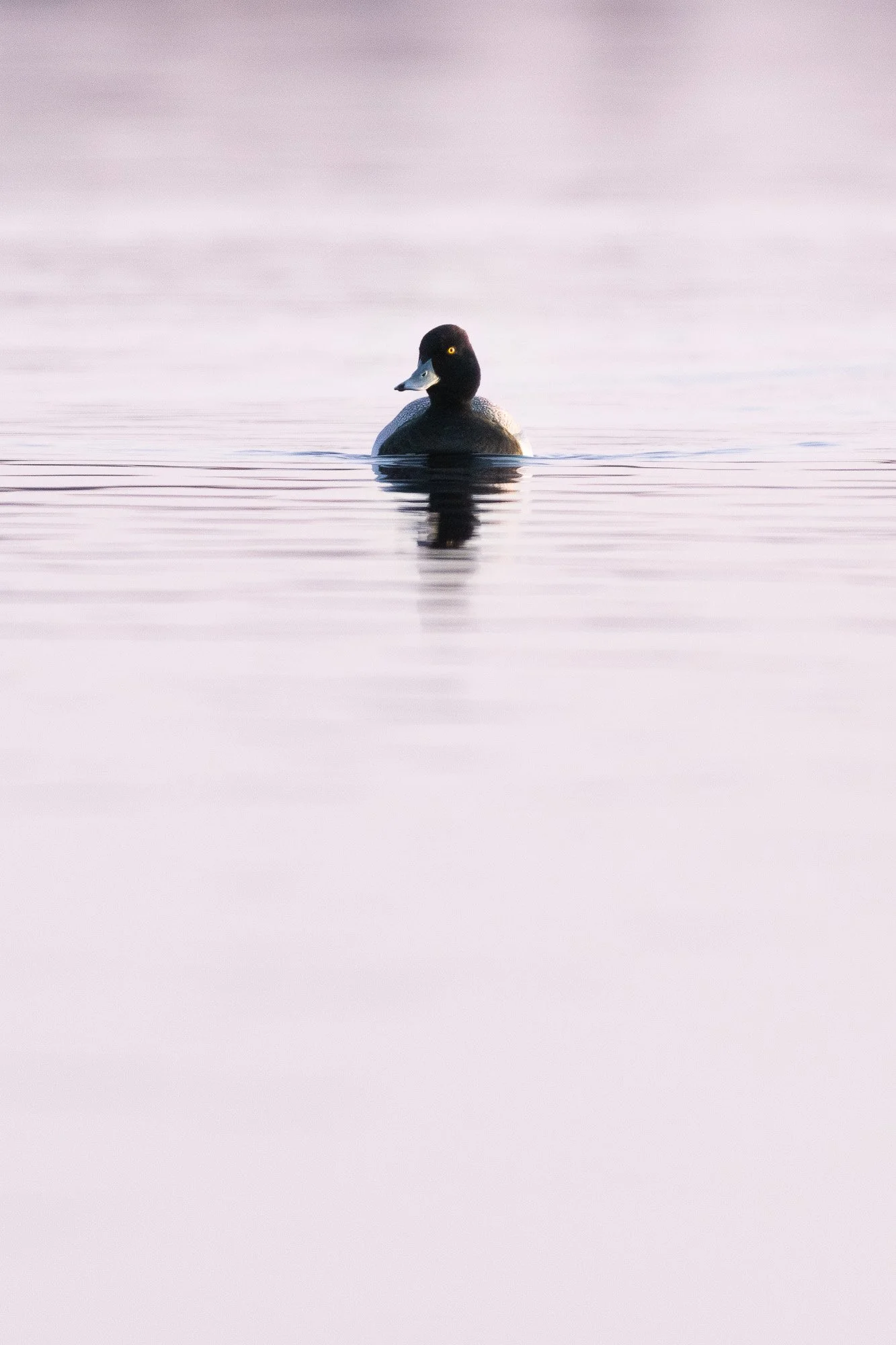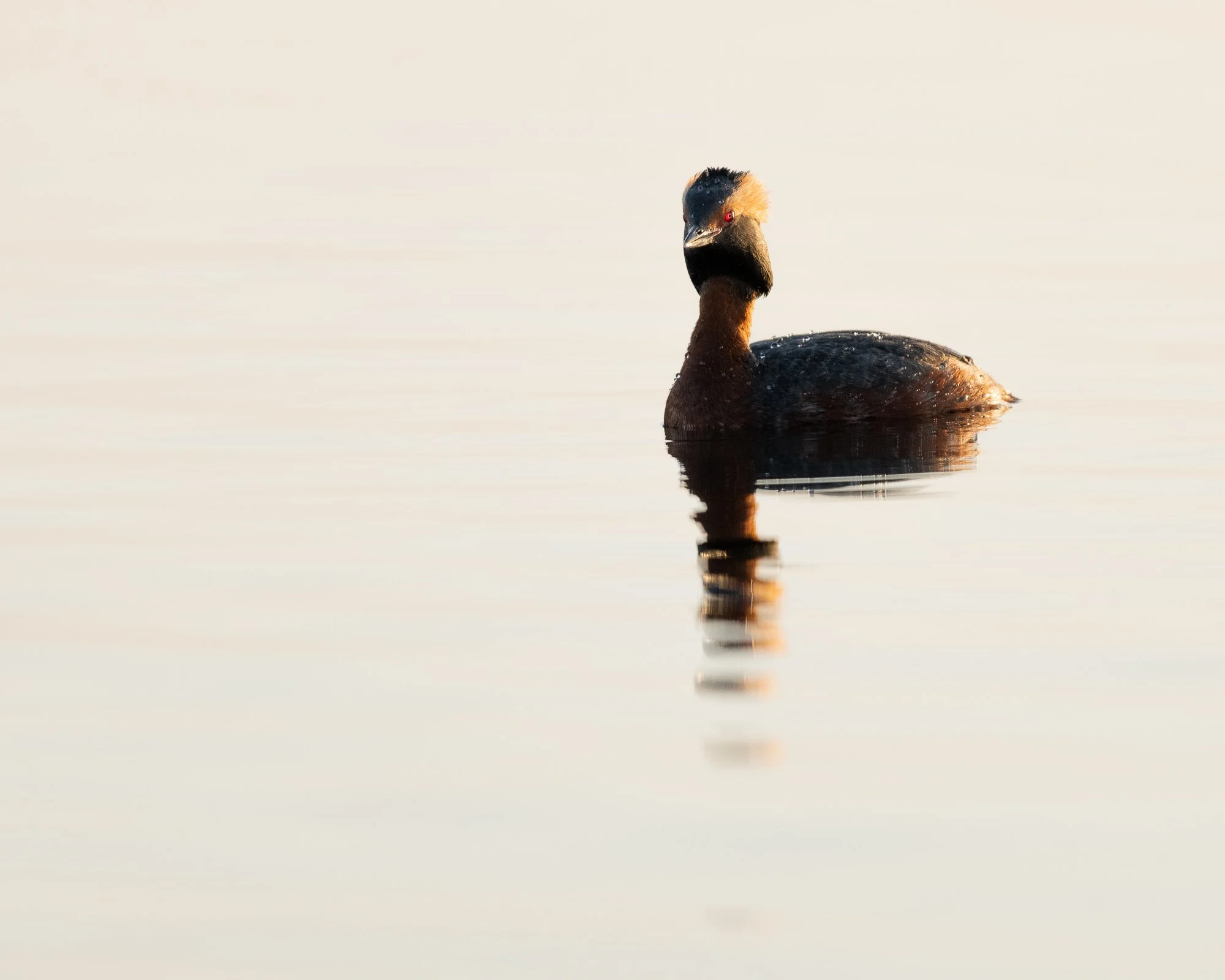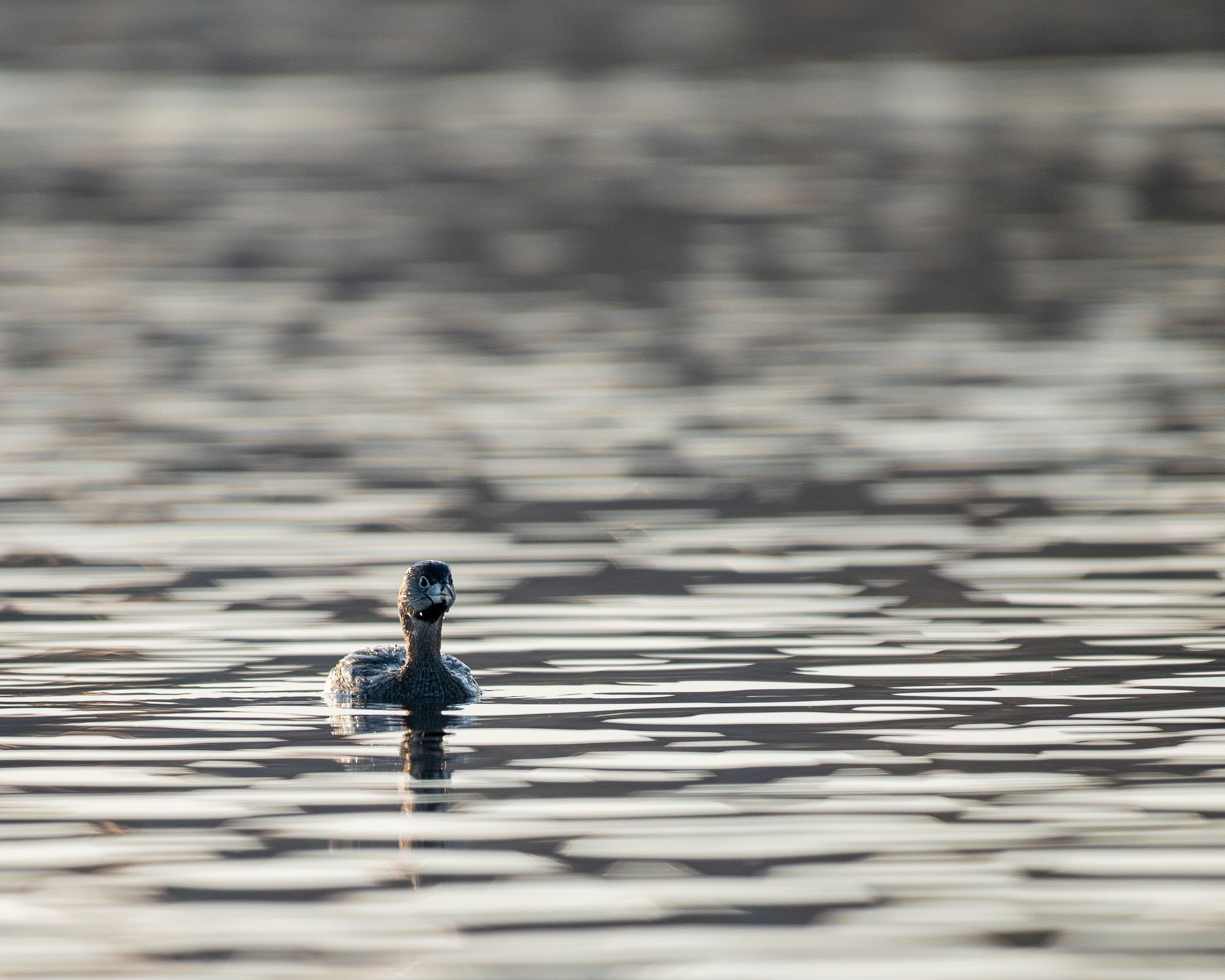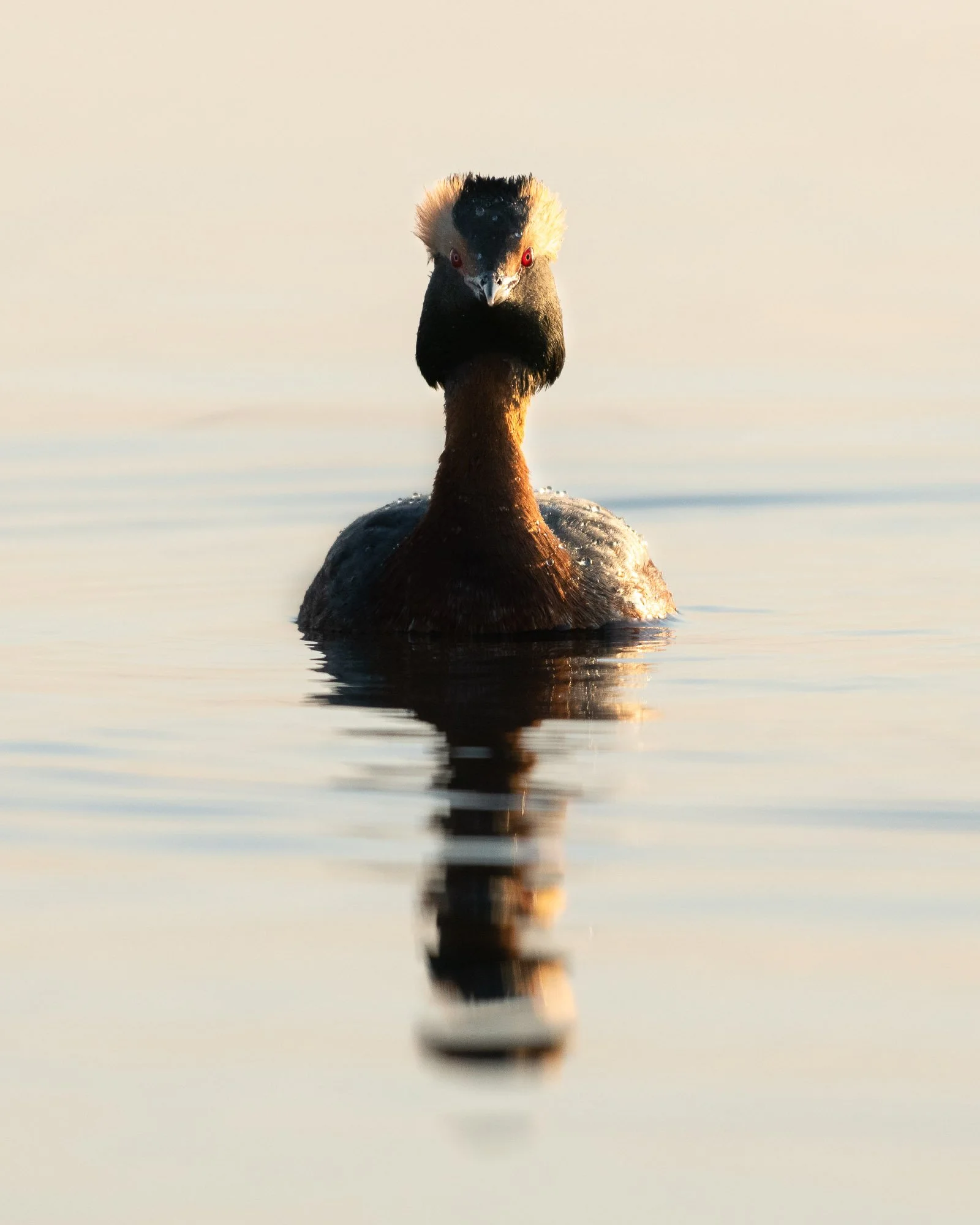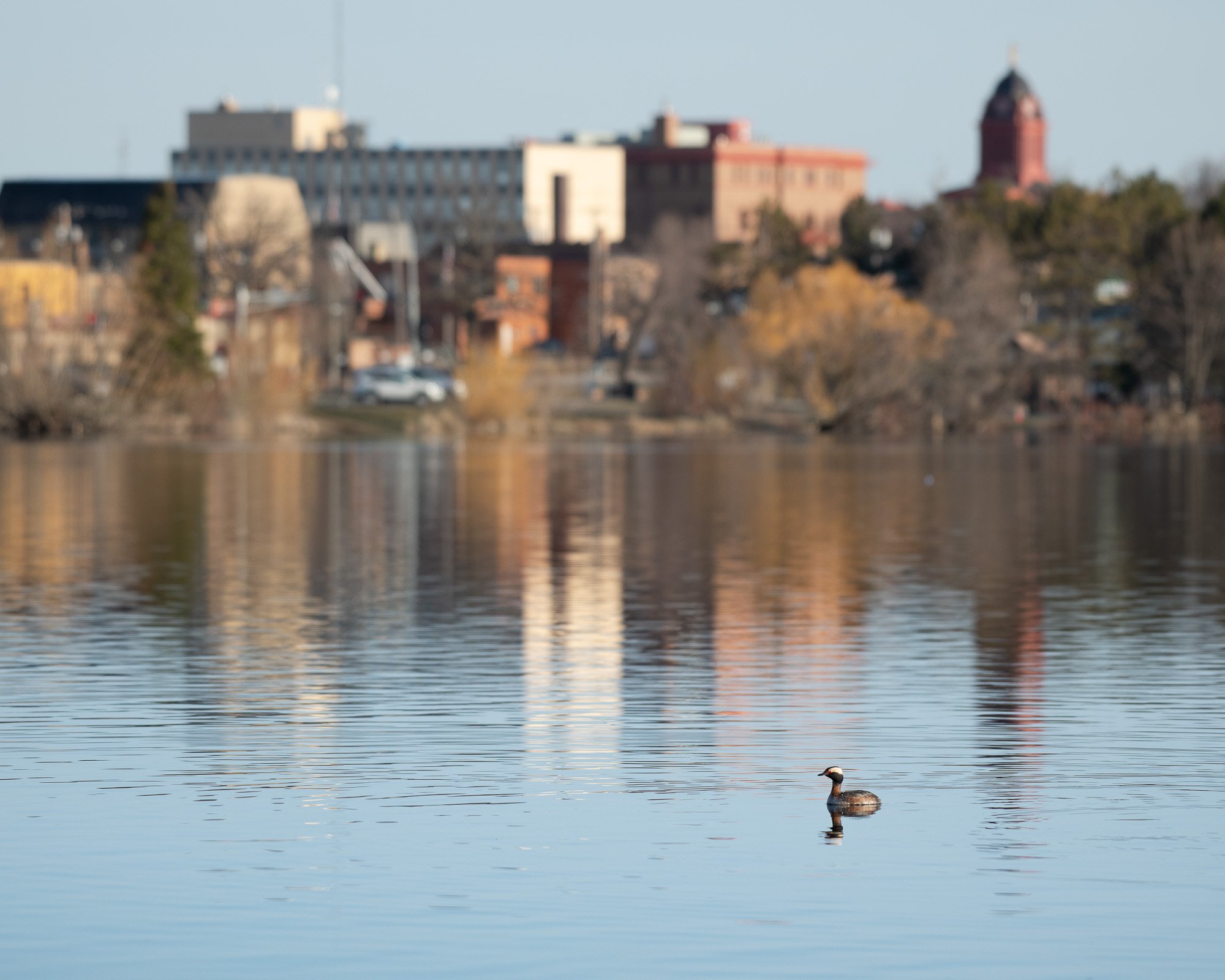Spring Waterfowl on Lake Bemidji
Lake Bemidji is a must-stop area for migratory waterfowl, also for wildlife photographers looking to shoot those same birds.
The ice-on date is often later than most other lakes in the area due to it’s size and currents. Additionally, the spring thaw comes early along the shores, when open water is a hot commodity for migrating ducks and geese. The late freeze and early thaw - at least along shore - can be contributed to the Mississippi River flowing straight through the lake from the south end to the eastern side. In areas where the shallow water is near the warmer currents from the Mississippi, the ice formation is delayed. Which leads to an incredibly high concentration of ducks in the pockets of open water that are peppered along shore and throughout the lake.
Those pockets are what I search for to photograph waterfowl in the fall and spring. The evening before, I went and scouted the ice conditions along the lake to see where the birds were sitting and where I should set-up the following morning. All along the southern shore the ice was about 30-40 yards out from shore which concentrated the birds and made for perfect shooting distances. The plan was to be on the southern end of the lake early the next morning. Upon arriving in the morning, I could see a strong and warm southern breeze had came during the night and pushed the ice sheet about 300 yards off shore, not good. The ducks were spread thin throughout the open water now. I was already up and at the spot so no turning back.
I met a buddy of mine at the parking lot near the statues of Paul Bunyan and Babe the Blue Ox; who are Bemidji and Minnesota icons. Walking along the southern shore, we found the perfect spot. A small piece of land that jutted out ever so slightly which allowed us to shoot up and down the lakefront, without any obstructions. Now all we needed to do was wait for the birds to come, and slowly but surely they came close enough to us for some great photos. Being on the southern shore meant shooting either back-lit subjects or side-lit subjects, which is always a challenge - but a fun one.
The majority of ducks that showed up were Greater Scaup, Common Goldeneye, Bufflehead, Common Mergansers, and wonderful surprise of a mix of grebes.
All of my favorite images from this outing were all lifer birds for me to photograph which was super cool!
Thank you!
The settings I used: 800-160 ISO, an F-stop of 5.6, and a shutter speed of 1/1250 of a second.
Types of Birds below: Greater Scaup, Horned Grebe, Pie-billed Grebe.
